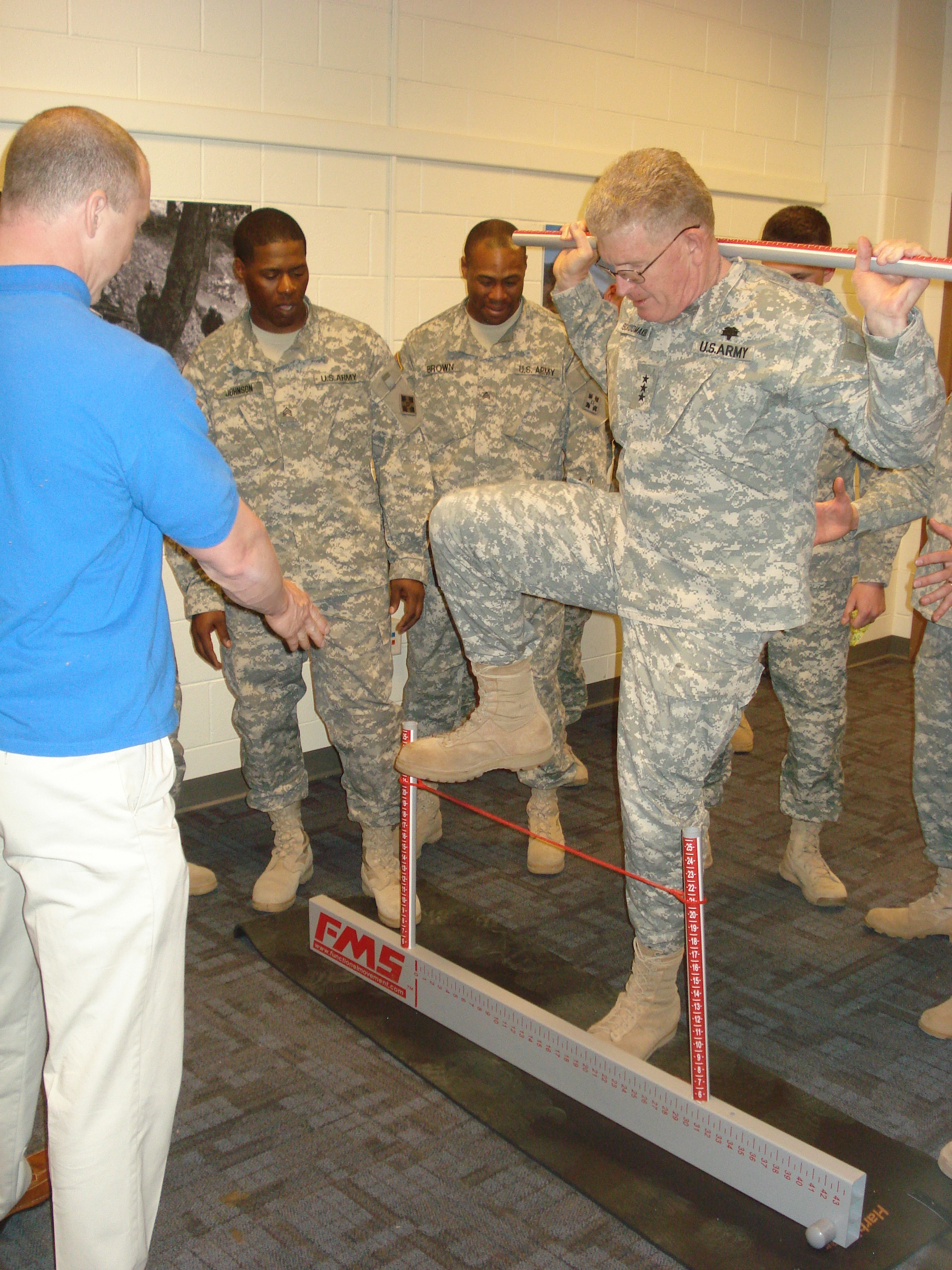FORT CARSON, Colo. -- The Army surgeon general received a firsthand look at Mountain Post injury prevention and performance optimization programs during a March 17 visit.
Lt. Gen. Eric B. Schoomaker observed and participated in the Soldier Performance Assessment Record training along with Soldiers from 4th Brigade Combat Team, 4th Infantry Division. He visited Fort Carson as part of his trip to Colorado Springs to attend a Western Regional Medical Command strategic planning conference.
He noted the need to evaluate current and proposed injury prevention and performance programs.
"Injury prevention is important, but we need to be able to evaluate these programs for their effectiveness and then standardize them for use across our Army. Otherwise, we're just mindlessly putting Soldiers through training that doesn't get results," he said.
A performance optimization team trained the Soldiers on how to collect baseline physical readiness data, such as functional movement screens, shuttle sprints and hop tests, which will be collected prior to the initiation of the 4th BCT's Mountain Athlete Warrior program. The team consisted of physical therapists from 4th BCT, Evans Army Community Hospital and 4th Inf. Div. civilian contractors, consisting of two athletic trainers and two certified strength and conditioning specialists.
The MAW and 2nd Brigade's Ironhorse Performance Optimization pilot programs are collaborative efforts between the U.S. Army Medical Command and the 4th Inf. Div. The programs use distinct functional approaches to enhance Soldier physical readiness while attempting to reduce injury rates. These programs support the Surgeon General's Medical Readiness Campaign that is aimed at reducing injuries while maximizing deployability. Medically not ready Soldiers account for 69 percent of the division's nondeployable population; many of these are due to musculoskeletal conditions.
SPAR attempts to determine the effectiveness of these two programs in terms of injury prevention by comparing baseline Soldier performance and military readiness prior to and after implementation of the MAW and Ironhorse Performance Optimization programs as well as after deployment. Both programs will be compared to identify the best way forward in order to minimize variation between unit fitness programs.
"It's harder than it looks, and the screen was able to find my physical limitations," Schoomaker said after participating in some of the screening activities.
"I thought the training was great," said Sgt. Zachery Hill, 704th Brigade Support Battalion, 4th BCT. "I think if leaders support and enforce (the use of these screens) it will help keep Soldiers healthy while increasing their (physical training) scores, without sticking to the old Army mindset of running five miles every day."
Schoomaker concurred: "If we can change the mindset in how military training is viewed, that is keeping you healthy while getting stronger, and we have great (noncommissioned officers) training our Soldiers, it will make the leader's job so much easier."


Social Sharing